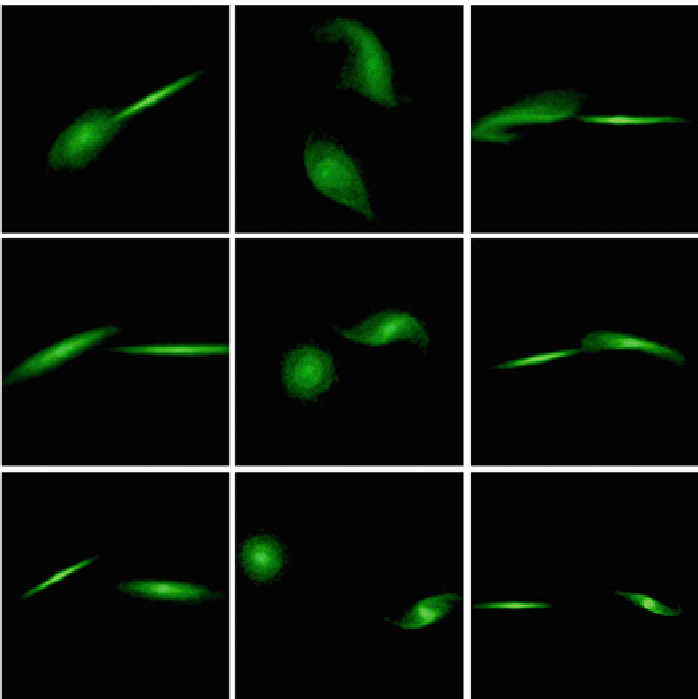Environmental Engineering Reference
In-Depth Information
Fig. 3
Snapshots of the collisions:
p
=
0
.
1
upper row
;
p
=
0
.
3
middle row
;and
p
=
0
.
6,
lower
row
. The shown area has a length side of 28kpc. The
left column
shows snapshots before the first
encounter; the
right column
shows snapshots after the collision; the
middle column
is another view
of the same snapshots on the
right column
.Galaxy1inthefirstcolumnisonthe
right side
of the
snapshot and on the
right column
snapshots is the one that has a well defined disc shape. After the
first encounter, disc of galaxy 2 turns to a warped disc shape
mass of the disc. We tune the contour map to have a good resolution map (see Fig.
1
).
With this contour map we scan the contour lines following several radial trajectories
starting at the center of mass. The longest trajectory which intersects the first set of
contour lines and which is in the same direction of the gradient at that point is the
major axis. The size of this trajectory is the size of the major axis. Now, assuming
the bar is rectangular in shape we follow a trajectory perpendicular to the one that
defines the major axis, and the intersection with the same set of contour lines will
define the minor axis and we will obtain its size. This method allows us to detect any
non-axisymmetric deformations such as bars in the disc plane. We have found traces

Search WWH ::

Custom Search